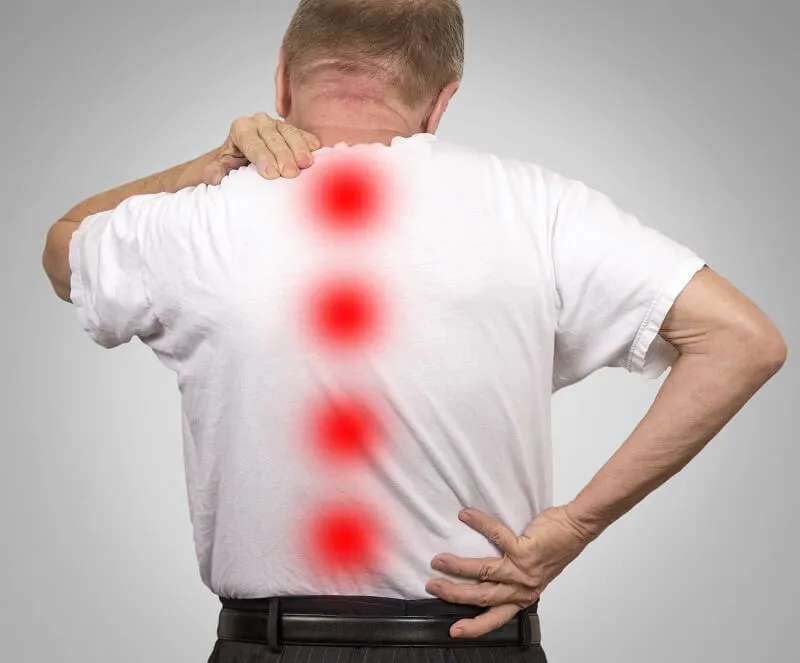



Does Spinal Stenosis Cause Pain? | Yashar Neurosurgery





Spinal stenosis is the medical term for a condition where the spinal canal becomes abnormally narrow and begins to exert pressure on the spinal cord. According to the [American College of Rheumatology](https://www.rheumatology.org/I-Am-A/Patient-Caregiver/Diseases-Conditions/Spinal-Stenosis), it is a fairly common condition, especially in patients over 50, who regularly develop spinal stenosis as a result of osteoarthritis. As of yet, there is not a direct cure. However, regular treatments and surgery can be used to ameliorate the symptoms of spinal stenosis. Common Symptoms Although spinal stenosis can cause pain, not all individuals with the condition will develop pain as a symptom. The [American Association of Neurological Surgeons](https://www.aans.org/en/Patients/Neurosurgical-Conditions-and-Treatments/Lumbar-Spinal-Stenosis) states that weakness, numbness, and cramping are also common symptoms that typically affect the extremities depending on the location of the narrowing. If the spinal canal is noticeably narrowing in the cervical region of the spine, then patients will typically experience these sensations in the arms. The legs are more likely to be the site of symptoms if the patient has developed lumbar spinal stenosis. In addition to abnormal sensation and pain, some cases of spinal stenosis can negatively affect motor function or limit bowel and bladder function. In some cases, spinal stenosis is largely asymptomatic. However, as the spine continues to degenerate and pressure on the spinal cord increases, patients will typically experience a gradual, parallel increase in their symptoms. As symptoms develop and worsen, your regular physician and neurosurgeon will work together to adapt your treatment plan. Surgery is typically considered to be a last resort, so do not be surprised if your medical team wants to experiment with other treatment options first. Spinal Stenosis Before 50 Although most cases of spinal stenosis occur after age 50 due to normal wear and tear combined with the onset osteoarthritis, there are several conditions that can cause the spinal canal to narrow long before reaching middle age. Healthline lists birth defects, spinal trauma, spinal curvature, Paget’s disease, tumors, and achondroplasia as other common causes of spinal stenosis. In many of these cases, the condition is influenced by abnormal growth present from birth. As a result, your regular physician should already be aware that your pre-existing conditions put you at risk for spinal stenosis. Speak with your doctor if you begin to regularly experience pain, tingling, numbness, or cramping in any of your extremities. This group of symptoms is referred to as myelopathy and typically points to a potential spinal cord injury. For patients without pre-existing conditions related to spinal stenosis, Healthline states that your doctor will likely want to go through the same diagnostic tests including the possibility of an X-ray, MRI scan, CT scan, electro myelogram, and bone scan. Without age-related factors or clear pre-existing conditions, your doctor may require more than one test to positively identify the cause of your symptoms. Treatment Paths If your regular physician is able to positively identify spinal stenosis as the cause of your symptoms, then it is recommended that you also enlist the help of a neurologist. [Dr. Yashar](https://dryashar.com/spine/spinal-stenosis/) will be able to help take you through the early stages of managing the condition by helping to build a treatment plan based on early interventions including rest, bracing, over-the-counter pain medications, and weight management. However, if your condition has already progressed past the initial stages, then your neurologist will begin to include pain management injections, physical therapy, and spinal decompression into your treatment plan. If symptoms continue to progress, then your neurosurgeon will likely move forward to the surgical phase. Cervical laminectomy, ACDF, and cervical laminoplasty are three common procedures used to ameliorate spinal stenosis symptoms. The best surgical option will depend on the individual patient, so [contact](https://dryashar.com/contact-us/) your local neurosurgeon and take the first steps toward a pain-free life.





Get in touch today
Please complete and submit the form below and a member of our staff will contact you shortly.


